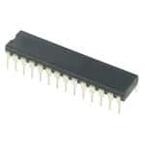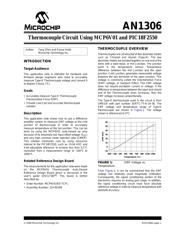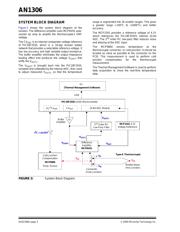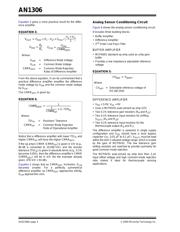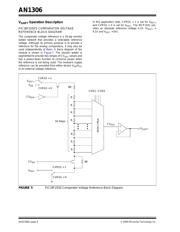
© 2009 Microchip Technology Inc. DS01306A-page 1
AN1306
INTRODUCTION
Target Audience
This application note is intended for hardware and
firmware design engineers who need to accurately
measure Type-K Thermocouple voltage and convert it
to degree Celsius (°C).
Goals
• Accurately measure Type-K Thermocouple
Electromotive Force (EMF)
• Provide Low-Cost and accurate thermocouple
solution
Description
This application note shows how to use a difference
amplifier system to measure EMF voltage at the cold
junction of thermocouple in order to accurately
measure temperature at the hot junction. This can be
done by using the MCP6V01 auto-zeroed op amp
because of its extremely low input offset voltage (V
OS
)
and very high common mode rejection ratio (CMRR).
This solution minimizes cost by using resources
internal to the PIC18F2550, such as 10-bit ADC and
4-bit adjustable reference, to achieve less than 0.1°C
resolution from a measurement range of -100°C to
1000°C.
Related Reference Design Board
The measurements for this application note were made
on the MCP6V01 Thermocouple Auto-Zeroed
Reference Design Board which is discussed in the
user’s guide (DS51738)
[9]
. This board is further
described by:
• Order Number: MCP6V01RD-TCPL
• Assembly Number: 114-00169
THERMOCOUPLE OVERVIEW
Thermocouples are constructed of two dissimilar metals
such as Chromel and Alumel (Type-K). The two
dissimilar metals are bonded together on one end of the
wires with a weld bead, or Hot Junction. The junction
point is the temperature sensor. Temperature
difference between the Hot Junction and the open
junction, Cold Junction, generates measurable voltage
between the two terminals of the open junction. This
voltage is commonly called the Electromotive Force
(EMF) voltage, or Seebeck Effect. This EMF voltage
does not require excitation current or voltage. If the
difference in temperature between the open and closed
end of the Thermocouple wires increases, then the
EMF voltage increases proportionally.
The Type-K thermocouple used in the circuit is from
OMEGA with part number 5SRTC-TT-K-24-36. The
EMF voltage and temperature range of Type-K
thermocouple are shown in Figure 1. The voltage
shown is referenced to 0°C.
FIGURE 1: EMF Voltage vs.
Temperature.
From Figure 1, it can be summarized that the EMF
voltage has relatively small magnitude (millivolts).
Consequently, the signal conditioning portion of the
electronics requires an analog gain stage. In addition,
the signal conditioning circuit must have absolute
reference voltage in order to measure temperature with
absolute accuracy.
Author: Yang Zhen and Ezana Haile
Microchip Technology Inc.
-10
0
10
20
30
40
50
60
-300 -100 100 300 500 700 900 1100 1300
Temperature (°C)
EMF (mV)
Thermocouple Circuit Using MCP6V01 and PIC18F2550

